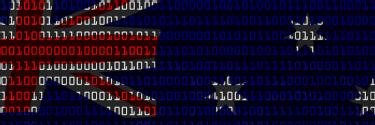News
-
 17 November 2025
17 November 2025
Technology innovation drives accountancy job changes
-
 17 November 2025
17 November 2025
UK investment bank IT outages cost £600k an hour
-
 17 November 2025
17 November 2025
Salesforce: CIOs closer to the bridge than ever due to agentic AI
-
 16 November 2025
16 November 2025
Australia lags regional peers in AI adoption
News Archive
-
November 16, 2025
16
Nov'25
Australia lags regional peers in AI adoption
A new report found governance gaps, a lack of training and fear of risks as key reasons for the nation's slow uptake of artificial intelligence compared with regional peers
-
November 16, 2025
16
Nov'25
AI’s hidden sting: a threat to millions of bees
The energy demands of artificial intelligence could have a devastating impact on Australia's honeybee population, a new study warns
-
November 14, 2025
14
Nov'25
Cl0p claims ransomware hit on NHS
Ransomware gangsters claim to have attacked the NHS but clarity on the nature of the incident is yet to emerge.
-
November 14, 2025
14
Nov'25
Jaguar Land Rover cyber attack costs firm £485m in the quarter
Jaguar Land Rover’s quarterly financial statement discloses a £485m loss due to the late August cyber attack that halted production for six weeks, damaging the UK economy
-
November 14, 2025
14
Nov'25
Dutch datacentre growth stalls while hydrogen remains untapped
ING warns grid congestion threatens Dutch datacentre leadership, while the country’s championed hydrogen solution remains largely untapped
-
November 14, 2025
14
Nov'25
NS&I’s digital overhaul £1.3bn over budget
NAO calls on the government-owned savings bank to come up with ‘realistic plan’ as digital transformation programme runs four years behind, and total costs rise to £3bn
-
November 14, 2025
14
Nov'25
Zayo builds backbone for Western US AI growth
Route connects two of the US’s fastest-growing AI, cloud hubs through first direct inland path, offering a resilient, diverse alternative to the existing corridor while expanding critical access to underserved communities
-
November 14, 2025
14
Nov'25
Qatar Airways checks in SD-WAN to take operations to higher altitude
MENA airline’s worldwide roll-out of airline technology provider’s software-defined wide-area network claimed to set a benchmark for aviation connectivity and performance
-
November 14, 2025
14
Nov'25
Nokia strengthens AI datacentre network performance
Supplier enhances portfolio, claiming ‘breakthrough’ network performance for new datacentre switches, doubling throughput and interface performance with added flexibility for range of deployment scenarios
-
November 14, 2025
14
Nov'25
MI5 made multiple applications for phone data to identify BBC journalist’s sources
MI5 discloses it made and authorised unlawful ‘sequential applications’ for Vincent Kearney’s phone data during his time at the BBC, but will neither confirm nor deny whether it undertook further ‘lawful’ surveillance of BBC journalists
-
November 14, 2025
14
Nov'25
Ericsson opens Bengaluru R&D unit to drive 5G software development
Research facility enhances comms tech provider’s presence in India, including the growth of application-specific integrated circuit development announced in June 2025
-
November 14, 2025
14
Nov'25
Singapore Sports Hub to get Wi-Fi 7 network
The upgrade will provide faster, more reliable connections for visitors during concerts and sporting events, and will help manage crowds and improve services
-
November 14, 2025
14
Nov'25
Lenovo to power FIFA World Cup 2026
Lenovo will provide its consumer and enterprise technology capabilities to power the upcoming FIFA World Cup, which has been deemed the most technologically advanced tournament in the game’s history
-
November 13, 2025
13
Nov'25
Two-thirds of finance firms use suppliers for AI agent development
Survey finds more banks and insurers are working with suppliers rather than going it alone when developing artificial intelligence agents
-
November 13, 2025
13
Nov'25
CBRE charts rise of neocloud providers within European colocation market
Real estate consultancy CBRE’s latest colocation market tracker shines a light on the impact neocloud providers are having on the supply and demand dynamics of the European datacentre market
-
November 13, 2025
13
Nov'25
Scottish government to launch cyber observatory
The observatory will analyse and share warnings on public sector cyber threats, and identify emerging risks
-
November 13, 2025
13
Nov'25
UK government vows to fast-track AI growth zone planning and energy access
On the same day the UK government confirms the location of its next AI growth zone, in North Wales, it also makes a series of pledges about fast-tracking planning and energy access to these artificial intelligence hubs
-
November 13, 2025
13
Nov'25
National Grid to extend Didcot substation in support of UK datacentre growth
National Grid is continuing with its work to ensure the nation’s electricity grids have the capacity to cope with the UK’s growing number of datacentres
-
November 13, 2025
13
Nov'25
10 World Trade office tower boosts connectivity with indoor 5G solution
Investors, real estate firm and tech provider deliver small-cell based neutral host network at premier commercial building to provide high-capacity, multi-operator indoor coverage with scalable, sustainable performance
-
November 13, 2025
13
Nov'25
Abu Dhabi hits accelerator on autonomous mobility commercialisation
Investment arm of Emirates development agency reveals 29 strategic partnerships to drive development of autonomous mobility in increasingly important region for smart mobility
-
November 13, 2025
13
Nov'25
Post Office contract with Fujitsu has option to extend into 2028
Extension agreement for controversial Horizon contract with Fujitsu has option that could take the relationship well into 2028
-
November 12, 2025
12
Nov'25
Hungry for data: Inside Europol’s secretive AI programme
The EU’s law enforcement agency has been quietly amassing data to feed an ambitious but secretive artificial intelligence development programme that could have far-reaching privacy implications for people across the bloc
-
November 12, 2025
12
Nov'25
US cyber intel sharing law set for temporary extension
The CISA 2015 cyber intelligence sharing law, which lapsed just over a month ago amid a wider shutdown, will receive a temporary lease of life should attempts to reopen the federal government succeed
-
November 12, 2025
12
Nov'25
Microsoft users warned over privilege elevation flaw
An elevation of privilege vulnerability in Windows Kernel tops the list of issues to address in the latest monthly Patch Tuesday update
-
November 12, 2025
12
Nov'25
Synnovis to notify NHS of data breach after nearly 18 months
Synnovis, the pathology lab services provider hit by a Qilin ransomware attack in 2024, is notifying its NHS partners that their patient data was compromised, following a lengthy investigation
-
November 12, 2025
12
Nov'25
UAE advances urban air mobility with simulation-driven regulatory framework
Abu Dhabi’s TII, Aspire and GCAA are pioneering autonomous flying taxi and delivery drone regulations through advanced simulations and real-world pilot zones
-
November 12, 2025
12
Nov'25
IT services companies and datacentres face regulation as cyber security bill reaches Parliament
The Cyber Security and Resilience Bill will require large IT services companies, including datacentres, to report security incidents within 24 hours
-
November 12, 2025
12
Nov'25
How Japanese banking giant MUFG is using AI
Japan’s largest bank aims to transform into an AI-native company by using agentic AI, changing how it handles data, and inking key partnerships with OpenAI and Sakana AI
-
November 11, 2025
11
Nov'25
Most Singapore SMEs yet to start their sustainability journey
Lack of funds, skills and time are the barriers faced by Singapore’s small and medium-sized enterprises in the green transition, according to a study by Gprnt and PwC
-
November 11, 2025
11
Nov'25
Major software issue occurred in PSNI emergency call system
An issue with Police Service of Northern Ireland’s ControlWorks software, used to record information reported by the public, led to a delay in urgent information being passed to investigators
-
November 11, 2025
11
Nov'25
National Highways to get more out of its data through single platform
Government-owned organisation National Highways will get more out of its data through extended working with IT service provider
-
November 11, 2025
11
Nov'25
Abu Dhabi accelerates autonomous mobility push with 29 commercial partnerships
The emirate is building one of the world’s most advanced regulatory and testing ecosystems for AI-driven mobility, from high-speed racing labs to city-wide delivery pilots
-
November 11, 2025
11
Nov'25
New high-accuracy GPS aims to end navigation woes
Grab and its tech partners are trialling a system that promises lane-level accuracy, a first for ride-hailing in Southeast Asia
-
November 11, 2025
11
Nov'25
Nokia Bell Labs and KDDI team to research 6G energy efficiency
Comms research facility enters joint research agreement with leading Japanese operator to explore ways to boost resiliency and energy efficiency on forthcoming generation of mobile networks
-
November 11, 2025
11
Nov'25
Gartner Symposium 2025: Get the IT team AI ready
Research from Gartner suggests that CIOs believe every role in IT will be AI-augmented. IT staff are worried about job security
-
November 11, 2025
11
Nov'25
Google: Don’t get distracted by AI, focus on real cyber threats
While hackers are using artificial intelligence to optimise attacks, many of the most damaging breaches still rely on old-school methods, says a top security analyst from Google
-
November 11, 2025
11
Nov'25
North American fleet management systems to show double-digit growth to 2029
Research from IoT analyst reveals installed base of fleet management systems in North America to reach 33 million units over the next three years, dominated by a handful of providers with installed bases in the millions
-
November 11, 2025
11
Nov'25
German healthcare aims to replace faxes and phones with secure messaging
Germany’s digital health agency, Gematik, has turned to open source for secure messaging services that will link patients, doctors and pharmacies
-
November 10, 2025
10
Nov'25
Oxford launches Equinox to build innovation hub in region
Oxford University and its host city have launched Equinox as a regional organisation uniting academia, business and government to establish Oxfordshire as a global innovation hub
-
November 10, 2025
10
Nov'25
Inside HP’s plan to build the Middle East’s next generation of tech creators
Through gaming labs, artificial intelligence mentorship and inclusive partnerships, HP is helping young people in the Middle East, especially women, turn digital skills into real-world careers
-
November 10, 2025
10
Nov'25
Post Office extends controversial Fujitsu contract in £41m deal
The Post Office’s controversial Horizon contract with Fujitsu will run until at least March 2027
-
November 10, 2025
10
Nov'25
DBS enhances GenAI chatbot for business clients
The bank’s virtual assistant, DBS Joy, has been enhanced with generative AI capabilities to provide business customers with faster and better answers to their queries
-
November 10, 2025
10
Nov'25
Gartner Symposium 2025: The AI opportunity for CIOs
CIOs are seeing AI projects failing to deliver return on investment. The conversation with the business needs to move beyond efficiency
-
November 10, 2025
10
Nov'25
UK’s ‘deregulatory’ AI approach won’t protect human rights
Expert witnesses called before Parliament’s Joint Committee on Human Rights have told MPs and Lords that the UK’s current approach to artificial intelligence regulation will fail to effectively protect people’s rights
-
November 10, 2025
10
Nov'25
Vodafone, AST SpaceMobile form base for EU satellite constellation
Looking to further strengthen Europe’s digital sovereignty, European operator and space comms leader advance partnership and select Germany for satellite operations centre
-
November 09, 2025
09
Nov'25
Nikkei data breach exposes personal data of over 17,000 staff
Hackers used stolen login details from an employee's computer to access the Japanese media giant’s Slack messaging platform, with names, email addresses and chat histories potentially exposed
-
November 07, 2025
07
Nov'25
Government showcases UK quantum computing pledge
With £670m set aside, the government is keen to show how the funding is supporting quantum innovation
-
November 07, 2025
07
Nov'25
Popular LLMs dangerously vulnerable to iterative attacks, says Cisco
Cisco researchers probed some of the most widely used public GenAI LLMs and found many of them were dangerously susceptible to so-called multi-turn cyber attacks producing undesirable outputs
-
November 07, 2025
07
Nov'25
City of London deploys SASE to future-proof public infrastructure
Managed services provider to deliver an end-to-end networking connectivity offering, encompassing what is said to be a UK-first enterprise secure access service edge roll-out for public services
-
November 07, 2025
07
Nov'25
Industry calls for clarity on government digital ID plans
The digital identity industry asks UK government for transparency on its digital identity scheme and proposes a formal collaboration agreement


